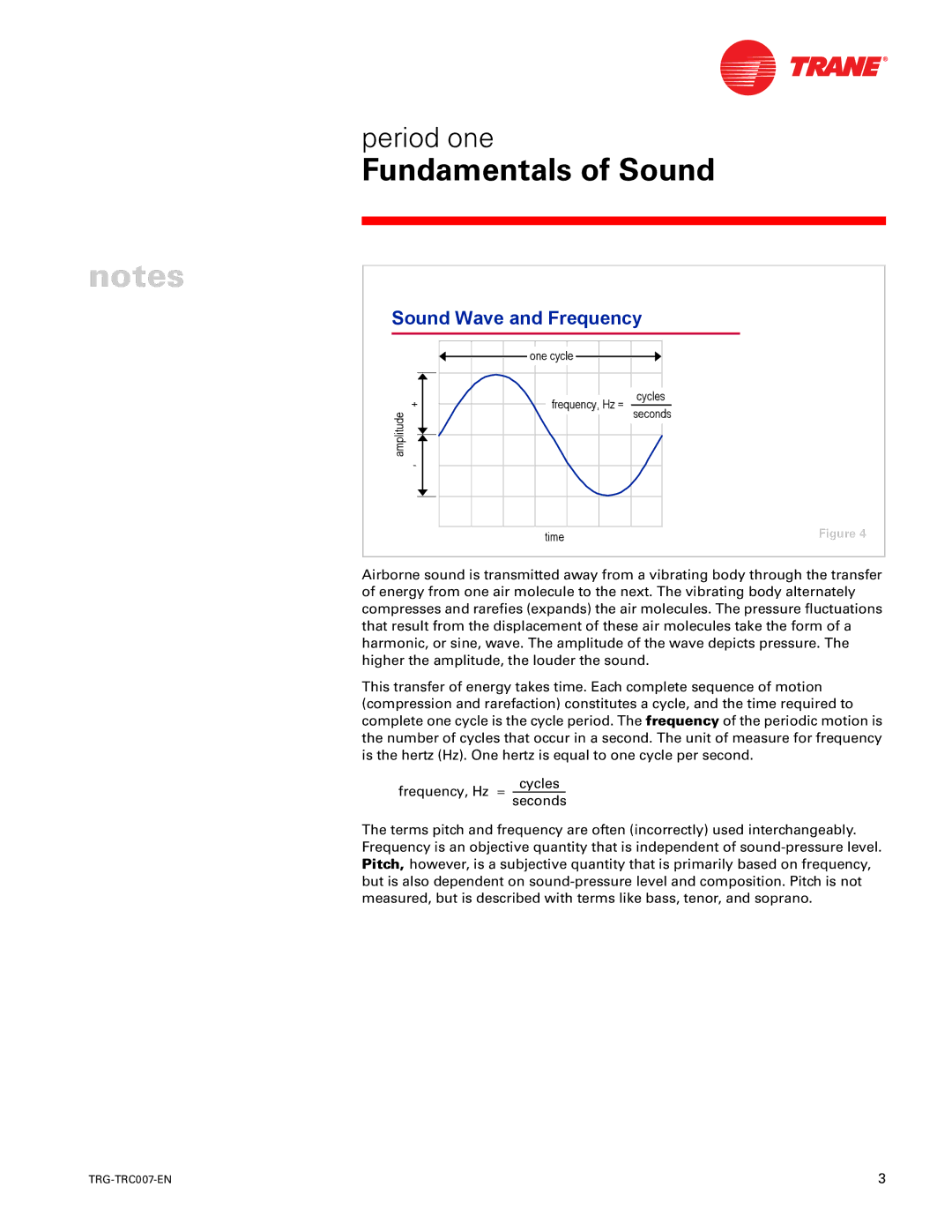
period one
Fundamentals of Sound
notes
Sound Wave and Frequency | ||
| one cycle |
|
+ | frequency, Hz = | cycles |
seconds | ||
amplitude |
|
|
- |
|
|
| time | Figure 4 |
Airborne sound is transmitted away from a vibrating body through the transfer of energy from one air molecule to the next. The vibrating body alternately compresses and rarefies (expands) the air molecules. The pressure fluctuations that result from the displacement of these air molecules take the form of a harmonic, or sine, wave. The amplitude of the wave depicts pressure. The higher the amplitude, the louder the sound.
This transfer of energy takes time. Each complete sequence of motion (compression and rarefaction) constitutes a cycle, and the time required to complete one cycle is the cycle period. The frequency of the periodic motion is the number of cycles that occur in a second. The unit of measure for frequency is the hertz (Hz). One hertz is equal to one cycle per second.
cycles
frequency, Hz =
seconds
The terms pitch and frequency are often (incorrectly) used interchangeably. Frequency is an objective quantity that is independent of
3 |
